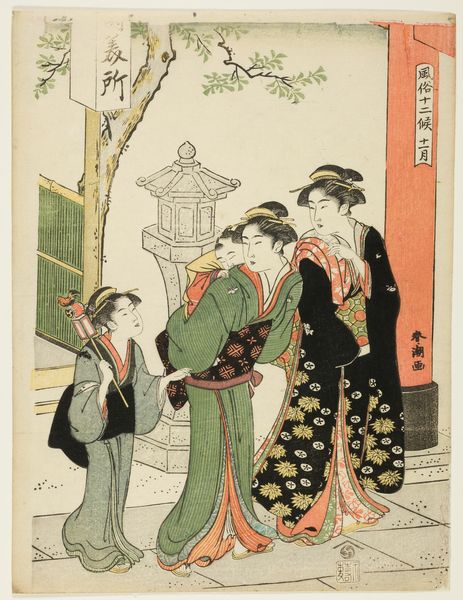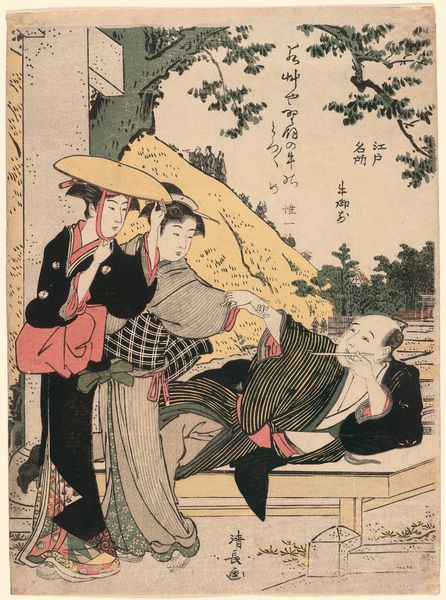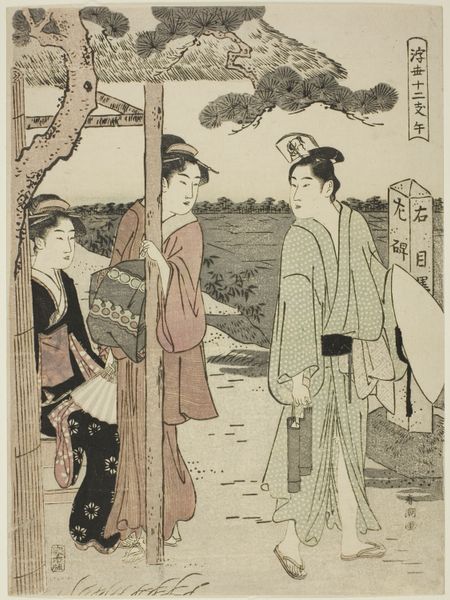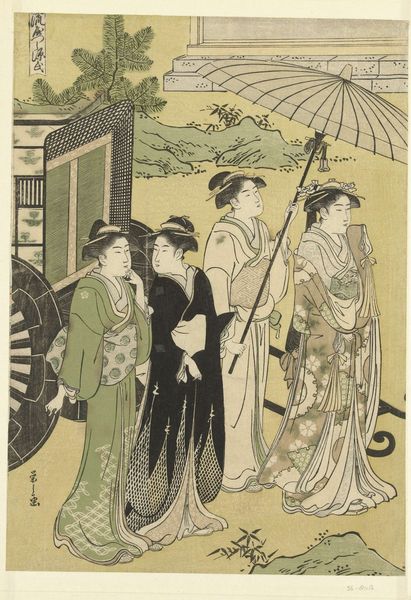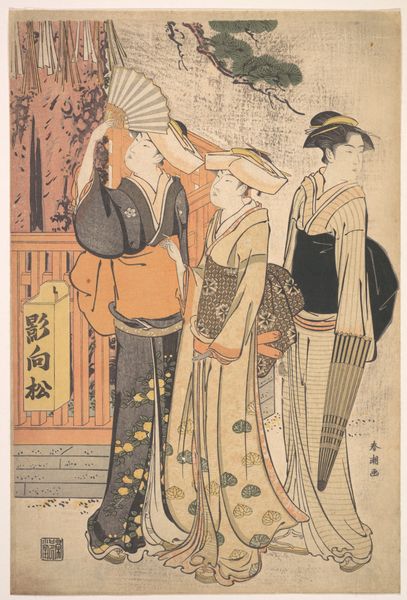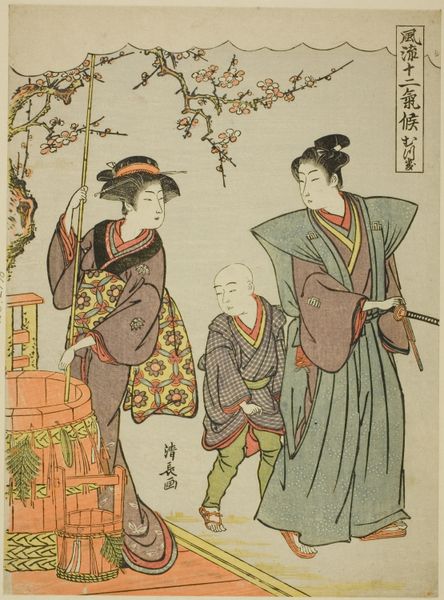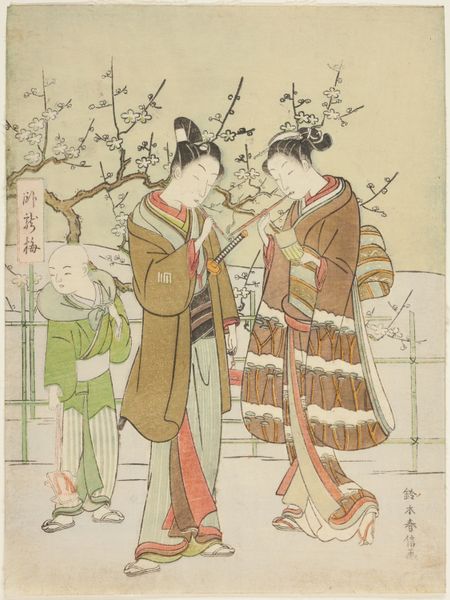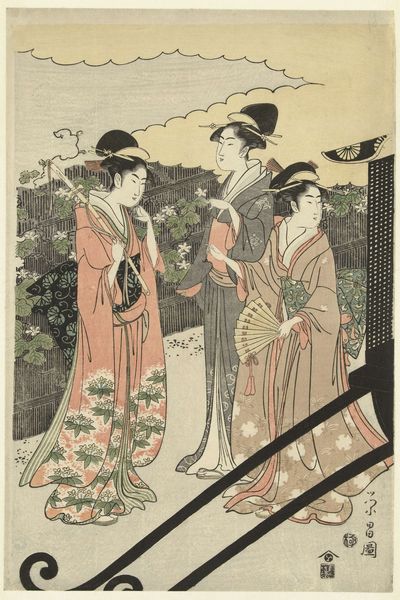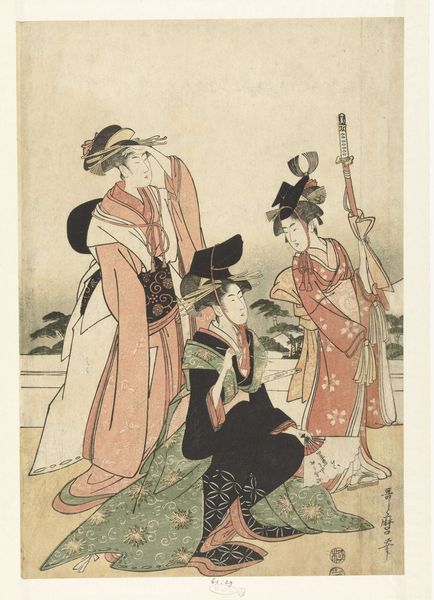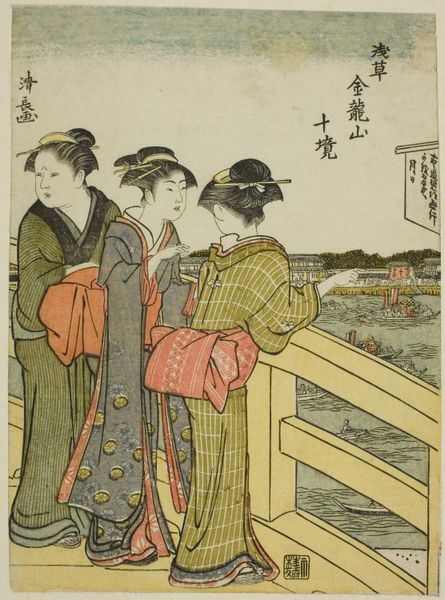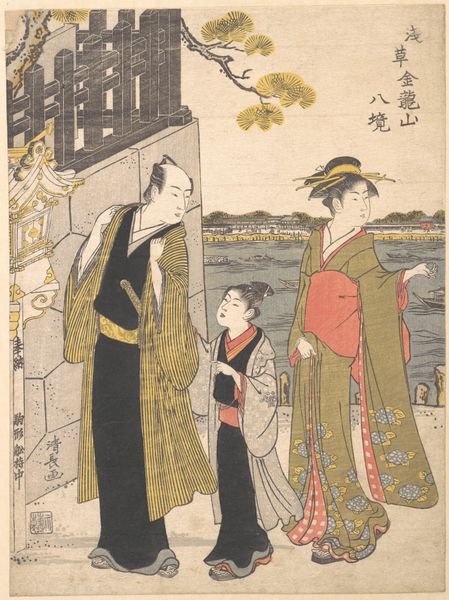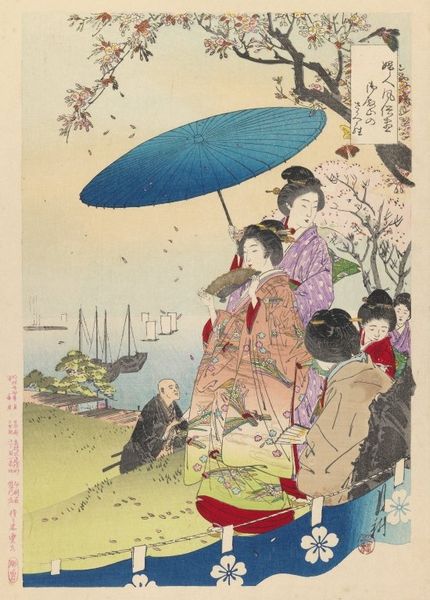
Bamboo Rakes as Speciality from the Torinomachi Festival Possibly 1864 - 1867
0:00
0:00
print, ink, woodblock-print
# print
#
asian-art
#
landscape
#
ukiyo-e
#
ink
#
woodblock-print
#
genre-painting
Dimensions: 13 7/16 × 9 in. (34.2 × 22.9 cm) (image, vertical ōban)
Copyright: Public Domain
Curator: Stepping into this vibrant scene by Utagawa Kunisada—created with ink and color on woodblock print—is like joining a lively street fair, don't you think? This is his "Bamboo Rakes as Speciality from the Torinomachi Festival," likely dating back to the mid-1860s. Editor: My first thought? It’s a bit…chaotic. But pleasantly so. A riot of patterns and people compressed onto the picture plane. The palette is muted, yet somehow joyful. A fascinating tension. Curator: Absolutely. It's worth remembering the Torinomachi festival, even today, centers around bringing good fortune for the year ahead, and bamboo rakes—decorated with all sorts of auspicious symbols—become the tools to "rake in" that good luck. This bustling atmosphere, captured in this print, mirrors the hope and prosperity associated with the event. See how people line up, they seem to enjoy the party in the background as well. Editor: Those bamboo rakes themselves—brimming with symbolic paraphernalia! It's almost overwhelming in the best way. Consider that smiling baby head riding a rake – which could symbolize fertility, abundance, and pure, unadulterated good cheer, like a celestial Uber. Then there's the composition overall; the foreground figures almost act as a stage curtain, drawing us deeper into the festive procession in the background. We're observers, yet invited to participate simultaneously. Curator: Kunisada was a master of ukiyo-e, and what's so interesting about him here is the ability to integrate very common objects like rakes into a larger narrative about wealth and commerce during Edo Japan. To have good fortune, one needed to be at least commercially aware, right? I think the whole idea is that with enough bamboo rakes—representing business acumen—even an infant can rake in the dough. Editor: And those patterned robes on the foreground figures – speaking of fabrics. Each detail seems meticulously chosen not just for aesthetic reasons, but as visual anchors, weighted by meaning. It prompts a larger thought too: how festivals served as vital community nodes – memory keepers even – weaving collective beliefs and dreams into tangible celebrations. Curator: So true. The magic, of course, is how a single print from over a century ago still crackles with that energy. Editor: Right, looking closer at the iconography helps to unveil a beautiful, dynamic celebration for the eye, and, unexpectedly, for the soul.
Comments
No comments
Be the first to comment and join the conversation on the ultimate creative platform.
